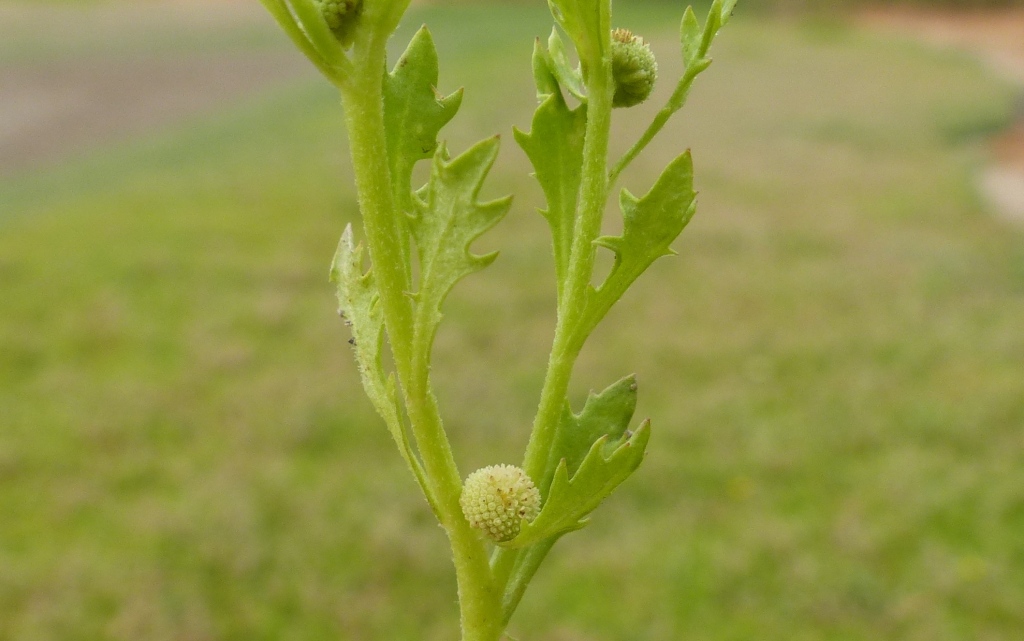Centipeda cunninghamii
(DC.) A.Braun & Asch. Common SneezeweedErect or ascending perennial (sometimes annual), to c. 30 cm high; branches glabrous or cottony near growing tips. Leaves oblong or narrowly obovate, 7–30 mm long, 2.5–7 mm wide, serrate, surfaces glabrous, resin dotted. Capitula biconvex, hemispherical or subglobular at anthesis, 4–6 mm diam., solitary, sessile, often axillary; involucral bracts obovate, entire or with minutely ruminate membranous margins, 1.5–3 mm long, glabrous to lightly cottony; receptacle convex; female florets c. 200–350, corollas 0.3–0.5 mm long; bisexual florets c. 20–50, corollas 0.7–0.8 mm long. Fruiting heads usually remaining intact until stems senesce; cypselas oblong, 1.2–1.6 mm long; ribs 4, occassionally also 1 or 2 less raised ribs, smooth or scabridulous, with antrorse, sometimes appressed hairs, usually inrolled at their apices; intervening faces with scattered vesicular trichomes; apex truncate or rounded, extending as a spongy or corky apical portion a quarters of the cypsela length. Flowers mostly Jan. –Apr.
LoM, MuM, Wim, GleP, VVP, VRiv, MSB, RobP, MuF, GipP, OtP, WaP, Gold, CVU, GGr, DunT, NIS, EGL, EGU, HSF, HNF, OtR, Strz, MonT, VAlp. All states. Locally common throughout the state on banks of perennial rivers, lakes and dams, on sandy, silty or clayey soils. Occurs from near sea-level to c. 500 m altitude.
Walsh, N.G. (1999). Centipeda. In: Walsh, N.G.; Entwisle, T.J., Flora of Victoria Vol. 4, Cornaceae to Asteraceae, pp. 720–723. Inkata Press, Melbourne.
 Spinning
Spinning




